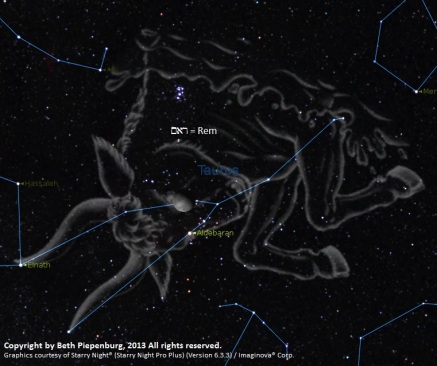CHAG HaSUKKOT – Feast of Tabernacles by Beth Piepenburg
During the year every man was required to attend three Holy Convocations (blue flags): The Feast of Unleavened Bread, the Feast of Weeks, and the Feast of Tabernacles. At the close of the summer-autumn harvest season, the sounding of the trumpets on Yom Teruah (Trumpets) and the atoning of the Tabernacle on Yom Kippur (Atonement) were preparatory days for the Feast of Ingathering known as the Feast of Tabernacles or Feast of Booths. Celebrated for seven days, this Feast began with a special Sabbath, the sixth of seven special Sabbaths. Then on the eighth day, the seventh special Sabbath called Shemini Atzeret, known as the Eighth Day of Assembly, was celebrated as a grand finale. Thus, in the seventh month, the Day of Trumpets and the Day of Atonement introduced the Feast of Tabernacles, and then the last special Sabbath concluded this harvest Feast. Likewise, the Feast of Tabernacles completed the trio of Holy Convocations.
Celebrated at the end of harvest was the Feast of Ingathering or the Feast of Tabernacles, which concluded the end of the season. Beginning with a special Sabbath when a multitude of sacrifices were offered, each subsequent day of the seven day Feast saw a reduction of animal offerings from the previous day. By celebrating the Feast of Tabernacles, the Israelites were acknowledging the LORD during their earthly pilgrimage and remembering what He had done for their ancestors. Known also as the Feast of Booths or Succoth, the Israelites celebrated this event by dwelling in temporary shelters called booths or sukkah as they had during the Exodus. Besides acknowledging the LORD for his provision, this dual celebration of final harvest and booths is symbolic of the end of the age and our earthly pilgrimage.
While the materials for the booths suggested in Leviticus differ somewhat to the post-exilic material list of Nehemiah, Josephus, the first century Jewish historian, lists only three of them with the addition of the pome- citron.

a) Known as the beautiful tree in Leviticus, the word הדר (hâdâr) actually means honor. Nehemiah identified the tree as the olive. Indeed, the honorable anointing oil is derived from the olive tree.
b) Recognized in Leviticus and later by Nehemiah, the palm tree תּמר (tâmâr) symbolizes praise. The date palm became the national symbol of Israel.
c) Often praised for its strength was the oak tree, because of its thick עבת (‛âbôth) ropelike appearance.
d) Although Leviticus used the generic term, willows, Nehemiah identified the tree as the myrtle הדס (hădas). Myrtles symbolized blessings of peace and joy.
e) We don’t know what the oil tree was, but it was translated into the Greek as the chaste tree.
After observing seven days of the Feast, then came the concluding special Sabbath, Shemini Atzeret, the Eighth Day of Assembly, culminating on the twenty-second day of the seventh month called Shebiy’iy. Besides the many sacrifices offered and the cessation of work, the day pointed to the future Resurrection. For New Testament times, Christ was resurrected on the eighth day of the week from the day He entered into Jerusalem, with the eighth day symbolizing the final Resurrection.
While the Israelites camped outside under the stars, the drama of this particular Feast was painted in the skies.
a) Beginning on the first night of Chag Sukkah, the moon is located in HaDagim (the Fishes), also known as Pisces or Ichthues, which represent the Priest and the King!
b) On the second or third night, the moon is located in Aries the Ram or in the Hebrew constellation HaTaleh, the Lamb, also known as Aries the Ram, which represents the Lamb of God.
c) On the third or fourth night, the moon is located in Taurus the bullock or in the Hebrew constellation HaRimu, the wild ox, representing the great Judge.
d) On the sixth or seventh night, the moon is located in Orion or in the Hebrew constellation HaChesil, a strong one or a hero, representing the Triumph and Brightness of His Coming.
e) On the last night, the moon is moving into Gemini, the twins, but in the Hebrew it is HaThaumim meaning United. The twofold representation of Christ as the Ruling Judge (Castor) and Laboring Sufferer (Pollux) are expounded by its two major stars.
Dramatized during the autumn months were five constellations representing the themes of the Feast of Tabernacles. Not only are the sacrificial animals depicted in the heavens, the symbols of the Resurrection are depicted as well. Every celebrant who looked up into the heavens would see the purposes of God while spending the night outdoors in the family sukkah or booth.
Dovetailed with the three Feasts were five of the seven special Sabbaths. Occurring in the seventh month before the Feast of Tabernacles were the other two special Sabbaths. The purpose of the last Feast was summed up with the LORD saying to the Israelites, “I AM the LORD your God.” While three special Sabbaths were observed in the spring, the four special Sabbaths were observed in the summer-autumn as a harvest finale. Interestingly, the three Feasts and the seven special Sabbaths combined into ten memorial times, with the number ten signifying divine perfection.
Copyright by Beth Piepenburg, 2013. All rights reserved.










